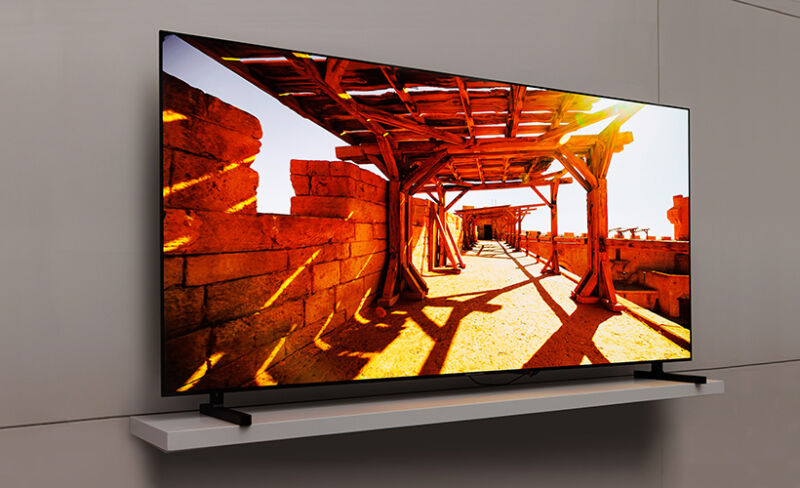
Samsung Display
It’s been a rollercoaster ride for Korean tech conglomerates LG and Samsung. In 2021, it was reported that they were about to reach a major business deal regarding OLED panels, but in 2022 it seemed like the talks fell through. Now, in 2023, the talks may have resumed.
The Elec reports that Samsung Electronics and LG Display have resumed discussions on a deal that would see LG supplying more than 200,000 white OLED (WOLED) panels to Samsung for a new line of Samsung-branded TVs that could launch as soon as 2024. That number would potentially be just the start of a longer partnership.
When news of the negotiations first broke a couple of years ago, it was reported that the conversation was started at the behest of the South Korean government in response to an international situation wherein LCD panel-producing Chinese companies like BOE were driving up the cost of LCD panels, threatening Samsung’s TV dominance. At that time, Samsung was all in on LCD technology in its TVs, competing with LG’s increasing focus on OLED.
Because of those market changes, and because OLED, in general, has achieved a bigger portion of consumers’ display spending compared to LCD, Samsung needs to further diversify with OLED to ensure its future success—at least until Micro LED becomes an affordable OLED alternative.
LCD panels have several core weaknesses concerning picture quality compared to OLED—namely that each pixel is not individually emissive, making it difficult to achieve strong contrast ratios or deep black levels on a per-pixel level. Samsung and others have introduced several innovations in recent years to address these weaknesses, but OLED has won faceoff after faceoff among reviewers.
Still, OLED has some disadvantages. It’s harder to make OLED panels get extremely bright than it is with LCD—and that’s key for impactful HDR highlights and bright room viewing. And, of course, OLED panels have a history of burn-in. Just as Samsung has sought to patch the core picture quality weaknesses of LCD screens, LG has produced some inventive solutions that have reduced the risk of OLED burn-in. For example, LG TVs may automatically detect ever-present network logos and dim or even shift the pixels of those areas of the screen in a way that is too subtle for you to notice, but that keeps the pixels from burning in as quickly.
Still, those solutions aren’t absolute. If Micro LED lives up to its promise, it would offer the best of both worlds: individually emissive pixels with high potential brightness and absolute blacks, and no burn-in risk. Companies and researchers working on Micro LED have yet to make that technology affordable enough for the mass market, though.
For the interim, at least, Samsung must ship more OLED TVs to compete. This deal would see LG and Samsung partnering so Samsung can ship new kinds of WOLED TVs over the next few years.
Currently, Samsung ships QD-OLED screens in high-end TVs. The WOLED panels could allow the company to replace LCD screens in the mid-range market, though, greatly lessening its dependency on Chinese companies in the LCD supply chain and giving the company more leverage in its negotiations with those companies.
Meanwhile, LG has faced considerable operating losses lately. Depending on the terms of the deal, this could help LG close that gap.








